The highly competitive nature of Formula 1 means that huge amounts of money are put into research and development of technology that quickly transfers to road cars.
Montreal, Quebec – As four-time world champion zipped by me at around 350 km/h in his Ferrari F1 race car here at the Canadian Grand Prix, I shook my head in amazement and admiration.
I marvelled at the young German’s breathtaking start when he shot from third on the grid to take the lead before the first corner at the Circuit Gilles Villeneuve. But my amazement was saved for the guys who put the gas in his tank.
No, your correspondent has not ingested too much in the way of gas fumes or trackside hospitality. It turns out that the Shell V-Power NiTRO+ gas pumped into many of today’s performance oriented road cars features 99 percent of the components that make up the super fuel that propels the four-wheel rockets driven by Vettel and his team mate Kimi Raikkonen.
Shell trackside manager Ian Albiston revealed the fuel industry and car manufacturers, along with Formula 1 bosses, are pushing hard to make what they do on and off track more relevant to the cars on our driveways.
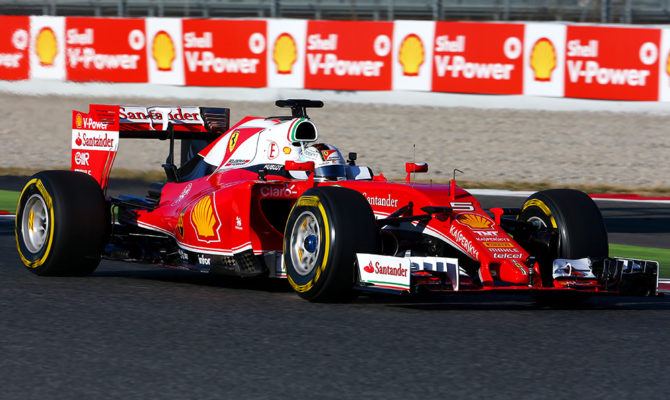
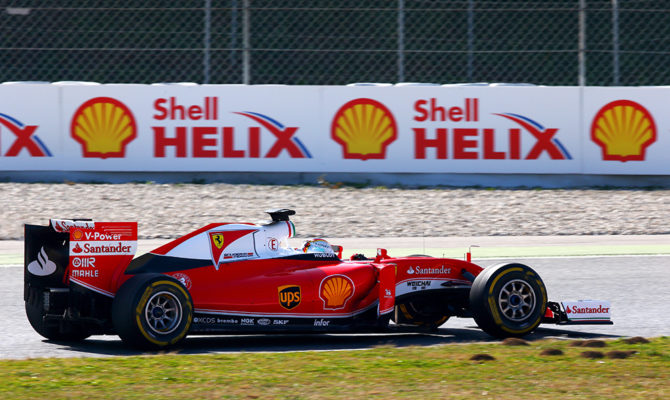
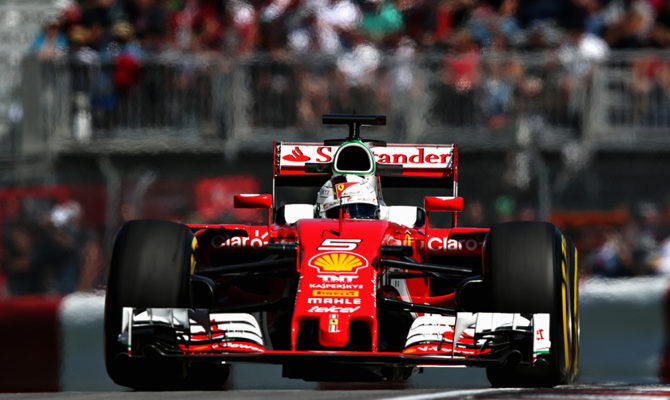
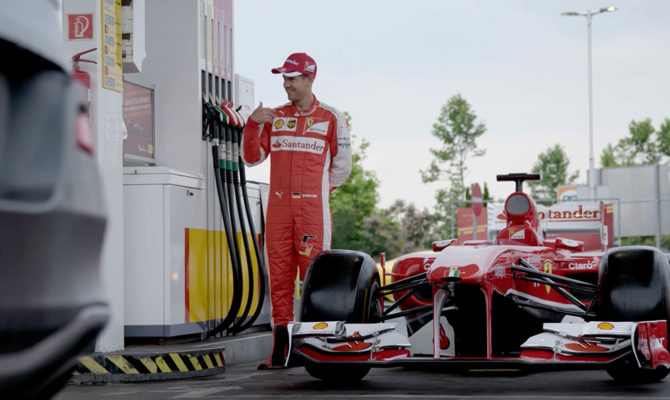



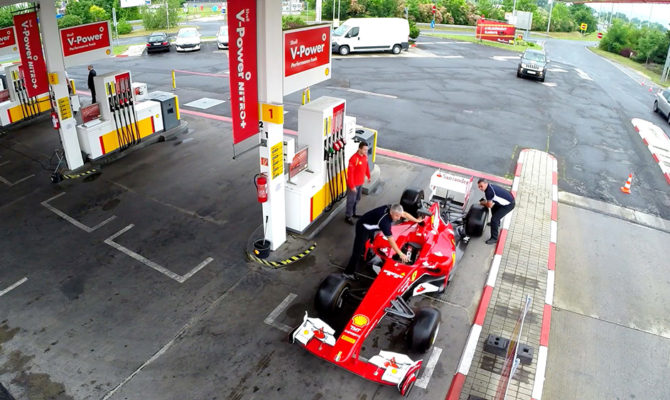
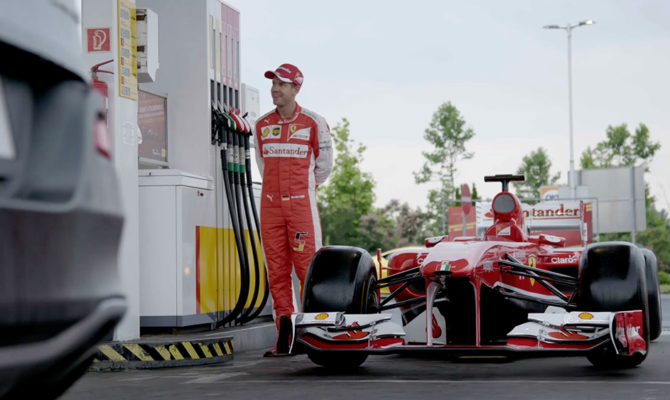

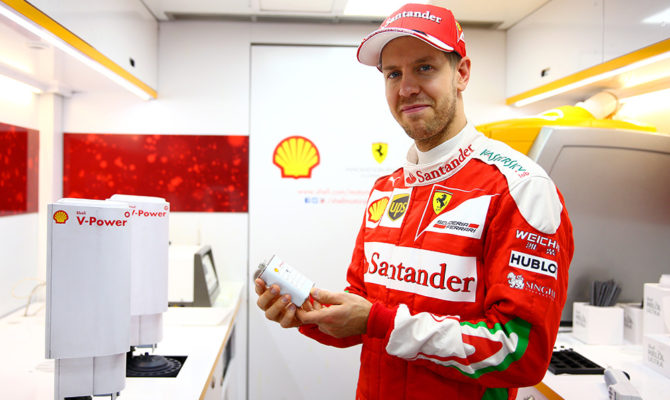
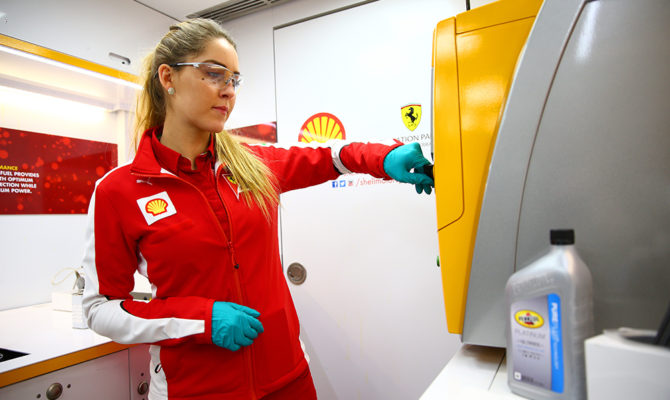
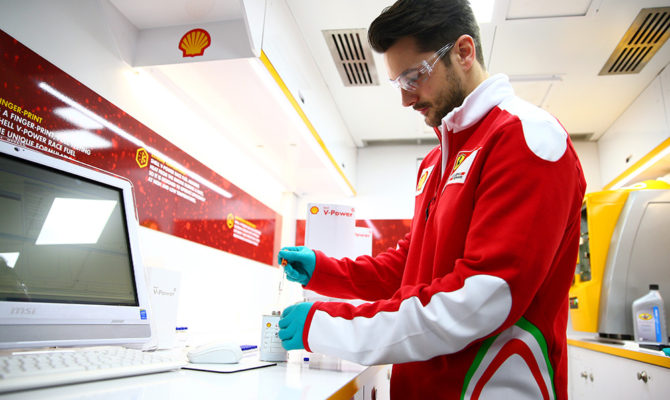

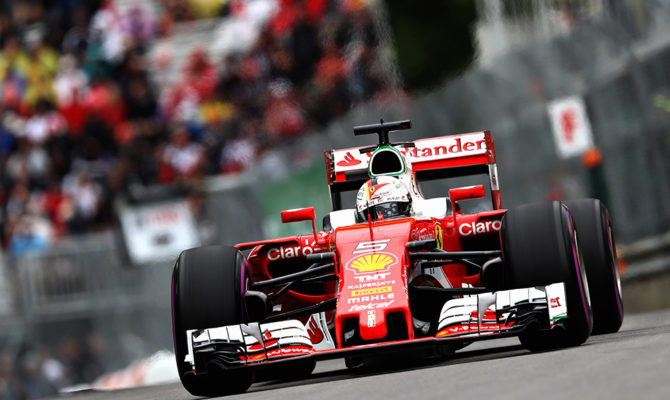
Albiston explained how the Innovation Partnership with Ferrari benefits his company and regular drivers: “The access to the (turbo-charged, 750 hp+ hybrid) V6 race engine is our ultimate test bed and we’re taking what we learn here to the road . . . quite quickly.
We have run Formula 1 cars on the same road fuel you can buy. The normal fuel was actually quicker in a straight line – quite frighteningly so – but the race fuel was quicker out of the corners.
“Last season 25 percent of the performance gain in the Ferrari power unit came from our fuel. The result was an improvement as much as half a second a lap.”
Vettel validated Albiston’s proud boast: “At one of the mid-season races last year we added new fuel and I could really feel the difference inside the car. And that’s not just 1 – 2 horsepower it was in region of 10. Half a second a lap can be 30 seconds over a race and when we are looking for lap time improvements of 100ths of a second in qualifying (for race grid position) that is immense.”
Then Albiston handed out iPads and we tried our hands at mixing our own race winning fuel formulations in a virtual environment. Every time a component adjustment broke the fuel rules, an on screen warning basically told participants not to give up the day job.
Then it was on to the trackside lab where techies continually test for impurities in the fuel and analyse oil to learn what parts to the engine might fail. The latter being determined by another piece of technology that transfers easily to your corner garage.
Albiston continued: “We are constantly monitoring the health of the engines because the rules allow each driver to use four engines per season. Away from the track, we have 50 scientists working on fuel for F1 all year long. That’s 21,000 man hours; 12.5 years’ work for one person!”
Today’s F1 regulations also mandate far greater efficiency in fuel consumption, limiting drivers to 100 kilos per race. The new hybrid engines with Energy Recovery Systems (ERS), now must cover a race distance on 30-40 percent less fuel than was allowed up until the end of 2013.
It’s easy to be cynical about the relevance of motorsports to the cars we drive every day. Count me as once being a doubter. But recent visits to F1 factories, labs and races has shown me that some remarkable leaps in technology are happening quickly, well beyond producing fuel that is more efficient and thus less harmful to the environment gas.
Improvements in tire manufacture is another area that leaps to mind and where discoveries quickly transfer to the road. Perhaps the most exciting developments are happening in the development of hybrid power.
All of the teams are developing technical partnerships with auto industry leaders that benefit their quest to be first to see the chequered flag and benefit us with a lighter touch on the accelerator! The Shell-Ferrari partnership is just one and during the next year, we’ll look at others that benefit the everyday driver.
The highly competitive nature of Formula 1 means that huge amounts of money are put into research and development of technology that quickly transfers to road cars. That’s good news for us too.
Recent Comments
- { Enjoyed your Forest of Bowland in the BMW X5M, particularly the photo of the BMW in front of the main part of Stonyhurst College where... }
- { Bantam designed the Jeep, not Willy's or Ford. The American military gave the original Bantam prototype to Willys and Ford to copy. There is plenty... }
- { All Escalades come with a 6.2-lilter V8 engine that produces 420 horsepower. A six-speed automatic is the only transmission offered and drives the rear wheels.... }
- { Alexandra is an excellent journalist. }
Popular Posts
- Journey to a ‘Sparkling’ Luxury Okanagan Resort “Four lucky readers will put a Dodge Journey’s weekend-...
- The Need For Speed: Hike Those Highway Limits More than half of those polled believe the province sho...
- Drives-U-Crazy… Erratic drivers. An early morning drive from Kelowna to Vancouver is nor...
- Readers Respond: The Pros and Cons of Increasing B.C. Speed Limits Increasing the speed limits will only increase risk to...
- Honda CR-V Review: The Compact Crossover To Get Things Done The CRV is a very stylish and aerodynamic crossover veh...






